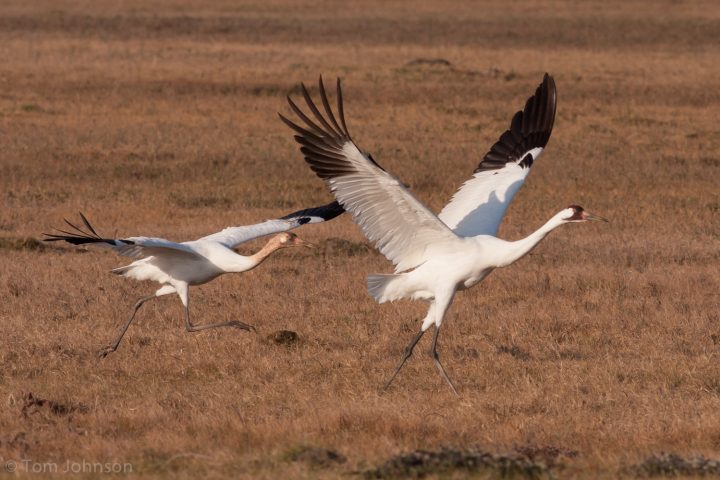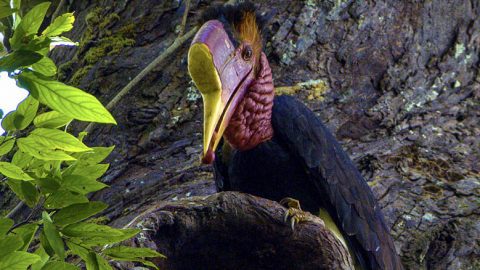Whooping Crane Population Hits Historic High in 2018
By Marc Devokaitis
December 20, 2018
From the Winter 2019 issue of Living Bird magazine. Subscribe now.
For the first time since the late 1800s, there are more than 500 Whooping Cranes in the population that winters in south Texas.
U.S. Fish and Wildlife Service aerial surveys counted 505 cranes in and around the Aransas National Wildlife Refuge in 2018 as a part of their annual winter survey, a 17 percent increase from the previous year. These cranes—which migrate to Aransas from breeding grounds in Canada’s Wood Buffalo National Park—comprise the largest of four populations of endangered Whooping Cranes left in North America. The Aransas–Wood Buffalo group is the only self-sustaining Whooping Crane population on the continent, meaning they breed and migrate without human assistance.
There were concerns for these cranes after Aransas took a direct hit from Hurricane Harvey in September 2017. But the refuge’s marshes weathered the storm just fine and continued to provide excellent habitat for Whooping Cranes, says Wade Harrell, U.S. Whooping Crane recovery coordinator for the USFWS.
By 1941, there were only 15 Whooping Cranes left in the wild, all of which wintered at Aransas. Whooping Cranes were charter members of the Endangered Species Act when it was signed in 1973, and for years the cranes’ recovery was slow but steady. But now the Aransas–Wood Buffalo flock (which contains about 80 percent of all wild Whooping Cranes) has doubled since 2010.
Harrell says that a crane population of 500 birds in Texas is the halfway point toward a milestone: “Reaching 1,000 birds [in the Aransas–Wood Buffalo population] and maintaining stability for 10 years is one of three recovery criteria that we would consider in downlisting the species from endangered to threatened. Current population models suggest that we could reach this population size in as few as 20 years, given current growth rates.”
According to Harrell, Whooping Cranes that winter at Aransas spend about 80 percent of their time in coastal marshes, which underscores why this habitat is so crucial to crane recovery. A 2013 study from the journal Nature Climate Change found that intact coastal wetlands protect about $2.4 billion in property along the Texas coast as well.
“Protecting coastal marshes not only ensures we have habitat for a growing Whooping Crane population, but also serves to buffer human infrastructure from storm impacts,” Harrell said.

All About Birds
is a free resource
Available for everyone,
funded by donors like you
American Kestrel by Blair Dudeck / Macaulay Library



